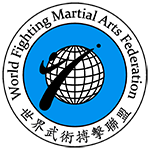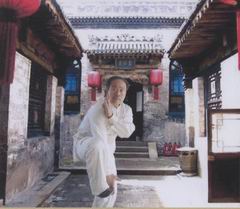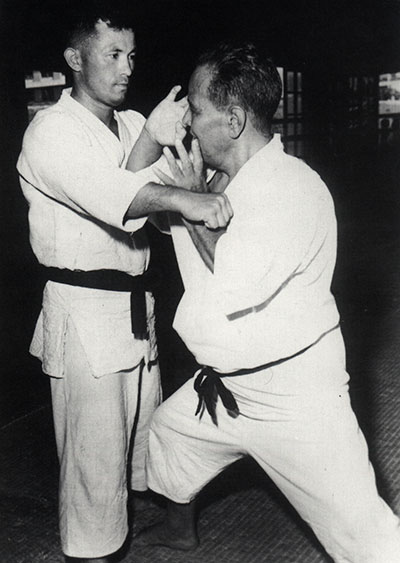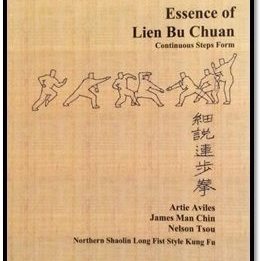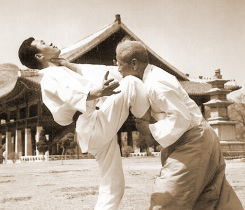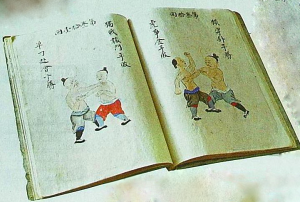Interview of A Great Internal Martial Artist – Master Yang Fansheng
 [Here is an old interview with Master Yang Fansheng that was translated back in 2009. The original interview date is unknown].
[Here is an old interview with Master Yang Fansheng that was translated back in 2009. The original interview date is unknown].
Strong and vigorous, both eyes bright and piercing, and known as “Shanxi Little Overlord”, Yang Fansheng left quite a deep impression on me. Cheng Suren praises him as having the highest level of xingyiquan.
Yang Fansheng obtained the first class award at the 1994 All China Xingyiquan Competition. He also placed top honors in the 1995 International Xingyiquan Competition. He is currently the president of the Shanxi Taigu Che Yizhai Association. All his life, he has been passing on the real skills of Xingyiquan. He has taught over a thousand people, with more than a hundred winning in All China martial art competitions and leitai matches.
— First, thank you very much for agreeing to our interview. Please start with an introduction of your martial arts background.
Yang: I was born on August 28th, 1949 in Shanxi provence, Taigu county. I learned xingyiquan from Wu Lianfu (note: Wu Lianfu became a disciple of Liu Jian in 1930).
— What’s the difference between Hebei and Shanxi styles of xingyiquan?
Yang: There are some differences. Hebei xingyiquan has a larger frame. Shanxi Taigu xingyiquan’s frame is smaller.
— If I may ask, what are the special characteristics of Che style xingyiquan?
Yang: Powerful jin in fighting, paying attention to the coordination of jin and yi, strong defense of the body, and good results in keeping the body healthy. Speaking of the characteristics of attack, of course there is “defense in attack, attack in defense”.
— I think this is applicable to all styles of xingyiquan, isn’t it?
Yang: With respect to fighting, each teacher has his own way of teaching. Each student also has his own way of learning. It’s different from person to person.
— Xingyiquan’s foundational santi stance is very important. I’ve heard that perfecting standing in santi requires a few years time. Is that right?
Yang: This is not necessarily true; each person is different. Santishi is a very effective posture for fighting. Santi is “Heaven Earth Man” which relates to santishi’s defense of hands protecting the face, elbows protecting the belly, knees protecting the lower body. Other than santishi, xingyiquan has a lot of other important things, such as “water carrying” stance, etc.
— Speaking of “water carrying” stance, it can be said it’s a signature move of Che style xingyiquan. What are some of the similarities with santishi?
Yang: There’s nothing especially different between the two, but in utilization there is some difference.
— Does Che style xingyiquan train iron sand palm?
Yang: Of course. We train both internal and external gongfu.
— What’s Che style xingyiquan’s elementary gongfu?
Yang: First is ya tui (pressing legs) and ti tui (kicking), then studying “Yi Gu Jing”, to stretch tendons and bones.
— Is it difficult?
Yang: No, it’s very simple, just like tongzi gong (kid’s gong fu). Practicing this enables your joints to be more pliable and tough during movement and makes your tendons and bones more smooth and extended. If your tendons and bones aren’t open and flexible, then even if you study with great effort, you won’t have good results. After achieving these basics, then you can study the santishi posture, the five element fists, and study power. After that you can practice the body methods of the 12 animals, two person drills, solo forms like zashichui, etc. There are also the 5 elements, 12 animals transformations as well.
The highest level of technique is no technique. The highest level of xingyiquan is to unify and harmonize the nervous system.
— Can you tells us some specific examples of practice?
Yang: If you want to learn real gongfu, you must have rigorous, systematic, and correct training. There is no quick and easy trick to it.
— I don’t know if my understanding is correct or not, but I feel that xinyi liuhequan stresses using the middle joint (elbow) and root joint (shoulder) whereas xingyiquan uses the end joint (fist, palm) more?
Yang: Let’s say we’re facing off against someone. If we want to use the power of the upper root joint, it’s rather difficult. It’s easier to use the end joint to attack. However, in reality, you should always defend against your opponent’s attack while at the same time attacking your opponent. If you only issue strength from your end joint, but your middle joint and root joint aren’t coordinated with it, or vice versa, that won’t work. None of them are isolated – when attacking and defending, everything is one integral whole.
— Guo Yunshen (from Hebei) style’s specialty is the half step bengquan. What is Che style’s representative move?
Yang: Guo Yunshen’s half step beng quan was the result of his diligent training, arduous training, and intensive study of Li Luoneng’s teachings. With this technique he defeated many people, and proved that his gongfu was very high. But his teacher, Li Luoneng, told him that, “No matter how trained, it cannot compare to your shixiong Che Yizhai”. Unconvinced, Guo Yunshen made a special trip to Taigu and compared skills with his shixiong, Che Yizhai. After losing, he was thoroughly convinced.
— So, when Che Yizhai and Guo Yunsen compared skills, what techniques were used?
Yang: In regards to Che Yizhai, he had well-rounded attack and defense, so Guo Yunshen had a hard time applying his attacks. No matter what attack he used, the result was the same – he was unable to even touch Che Yizhai’s clothes. After discussion, Guo Yunshen was overjoyed and truly convinced.
In speaking of their techniques, the instant that Guo struck with a right beng quan, Che Yizhai sealed up everything above Guo’s right elbow – that is, the middle joint and the root joint. He was unable to apply anything. After the comparison of skills, Che told Guo, “Technique can’t beat strength, strength can’t beat gong, gong can’t beat artistry, artistry can’t beat spiritual.”
There’s another story told about that time. The first time Guo Yunshen visited Che Yizhai, Che’s top disciple (Li Fuzhen) asked to accept the challenge. But Che Yizhai did not agree because Li Fuzhen was a cruel and merciless person. Li’s attacks were vicious, and Che Yizhai was afraid that Guo Yunshen would suffer injury. In the end, Guo Yunshen was completely convinced of and deeply admired Che Yizhai’s skill. He stayed in Taigu for over a year to learn from Che Yizhai.
